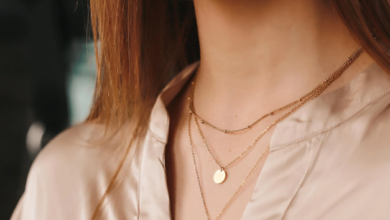Is There a Difference Between Men’s and Women’s Shampoos and Conditioners?

In the world of personal care, the shelves are lined with a vast array of shampoos and conditioners, many distinctly marketed towards men or women. These products often boast different scents, packaging, and promises tailored to each gender. But does a real, substantive difference exist between men’s and women’s shampoos and conditioners, or is this division primarily a result of clever marketing?
Understanding whether these gendered products truly cater to different hair care needs or if unisex shampoo and conditioners for any hair type can equally serve all users requires a closer examination of their formulations, ingredients, and effectiveness.
Background Information
The concept of gender-specific hair care products is relatively recent. Historically, hair care was a unisex affair, with men and women using the same soaps and oils for hair maintenance. It wasn’t until the 20th century, with the rise of modern advertising and consumer culture, that companies began to market products specifically for men and women. This shift was part of a broader trend of gendered marketing, where everyday products were repackaged and rebranded to appeal to traditional gender roles and expectations.
See also: Scented Sophistication: Navigating the World of Fragrances
Market Perspective
Today, the hair care industry is a multi-billion dollar market, with a significant portion dedicated to gender-specific products. The rationale behind this segmentation is multifaceted. Companies argue that men and women have different hair and scalp needs, requiring specialized formulations. However, some industry analysts suggest that the divide is more about creating a larger market and encouraging consumers to buy more products. By offering distinct lines for men and women, companies can expand their product range and increase sales.
Ingredient Comparison
1. Common Ingredients
Both men’s and women’s shampoos and conditioners share several core ingredients. Cleansers like sodium lauryl sulfate and sodium laureth sulfate are common in both, providing the foaming action that helps remove dirt and oil. Conditioning agents like silicones (e.g., dimethicone) and quaternary ammonium compounds (e.g., cetrimonium chloride) are also widely used to smooth and detangle hair. Additionally, both often contain moisturizers such as glycerin and natural oils like coconut or argan oil.
2 . Unique Ingredients
Where the differences start to appear is in the specific additional ingredients tailored to address gender-specific concerns. For example, men’s shampoos might include ingredients like menthol or eucalyptus for a cooling sensation, which is marketed as invigorating. They may also contain stronger cleansing agents to combat oiliness, as men tend to have oilier scalps. Women’s products, on the other hand, often focus on moisture and repair, with ingredients like keratin, biotin, and various botanical extracts aimed at strengthening hair and enhancing shine.
Formulation and Scent
1. Formulation Differences
The formulation of men’s and women’s hair care products often reflects the differing hair types and concerns. Men’s shampoos might be formulated to address issues like dandruff, hair thinning, and excessive oil production. These shampoos often have a higher concentration of cleansing agents to remove buildup and maintain scalp health. Women’s shampoos and conditioners, however, frequently target damage repair, hydration, and color protection. They tend to have richer, creamier formulations designed to nourish and protect longer hair, which is more prone to damage.
2. Scent Profiles
One of the most noticeable differences between men’s and women’s hair care products is the scent. Men’s shampoos and conditioners typically feature musky, woody, or spicy fragrances, such as sandalwood, cedar, and mint. These scents are chosen to align with traditional masculine tastes. In contrast, women’s products often boast floral, fruity, or sweet scents like lavender, rose, and vanilla. This differentiation in scent not only appeals to gender-based preferences but also reinforces the gender-specific branding of these products.
Packaging and Marketing
1. Design and Packaging
The packaging of men’s and women’s hair care products is another area where differences are stark. Men’s products often come in dark, bold packaging with straightforward, minimalist designs. This packaging approach is intended to convey strength, simplicity, and efficiency. Women’s products, however, are typically packaged in lighter colors with more intricate and decorative designs. This aesthetic is meant to suggest softness, beauty, and luxury.
2. Advertising Techniques
Marketing strategies for these products also differ significantly. Advertisements for men’s shampoos and conditioners often emphasize practicality and effectiveness, focusing on features like dandruff control or hair thickening. They are typically straightforward and highlight functional benefits. Women’s product ads, however, frequently focus on the sensory experience and emotional appeal, showcasing the luxurious lather, pleasing scent, and the promise of beautiful, healthy hair.
Functional Differences
1. Hair Types and Needs
There are genuine differences in the hair and scalp needs of men and women, which can justify the variations in product formulations. Men generally have thicker, oilier hair and are more prone to scalp issues like dandruff. As a result, men’s shampoos often include stronger cleansers and ingredients like zinc pyrithione to combat dandruff. Women, on the other hand, often deal with longer hair that is more susceptible to damage from styling and environmental factors. Women’s products, therefore, prioritize moisture, repair, and protection.
2. Usage Patterns
Another factor to consider is the difference in usage patterns between men and women. Men are more likely to use a single product for both cleansing and conditioning, preferring the convenience of 2-in-1 shampoos. Women, however, often follow a more elaborate hair care routine that includes separate shampoos, conditioners, and additional treatments like masks or serums. This difference in usage patterns influences how products are formulated and marketed.
Expert Opinions
1. Dermatologists and Trichologists
Experts in dermatology and trichology (the study of hair and scalp) often weigh in on the necessity of gender-specific hair care products. Many agree that while there are some legitimate differences in hair and scalp conditions between genders, the fundamental needs for cleansing, moisturizing, and protecting hair are universal. According to these experts, unisex shampoo and conditioners for any hair type can effectively meet the needs of most users, provided they address specific concerns like dryness or dandruff.
2. Consumer Insights
Consumer feedback also provides valuable insights. Many users have reported satisfaction with unisex shampoo and conditioners for any hair type, noting that these products often strike a balance between the needs of different hair types without the need for gender-specific branding. Consumers appreciate the simplicity and effectiveness of unisex products, and some prefer them to the more specialized options available.
Conclusion
In conclusion, while there are some differences in the ingredients, formulations, scents, and packaging of men’s and women’s shampoos and conditioners, the necessity of these distinctions is debatable. The core ingredients and functions of hair care products are similar across genders, focusing on cleansing, conditioning, and protecting the hair. The variations often cater more to marketing strategies and consumer preferences than to significant differences in hair care needs. Unisex shampoo and conditioners for any hair type offer a practical alternative that can meet the needs of a wide range of users, providing a straightforward solution without the gendered packaging and marketing. Ultimately, the best choice in hair care comes down to individual needs and preferences, rather than the gender-specific labels.



